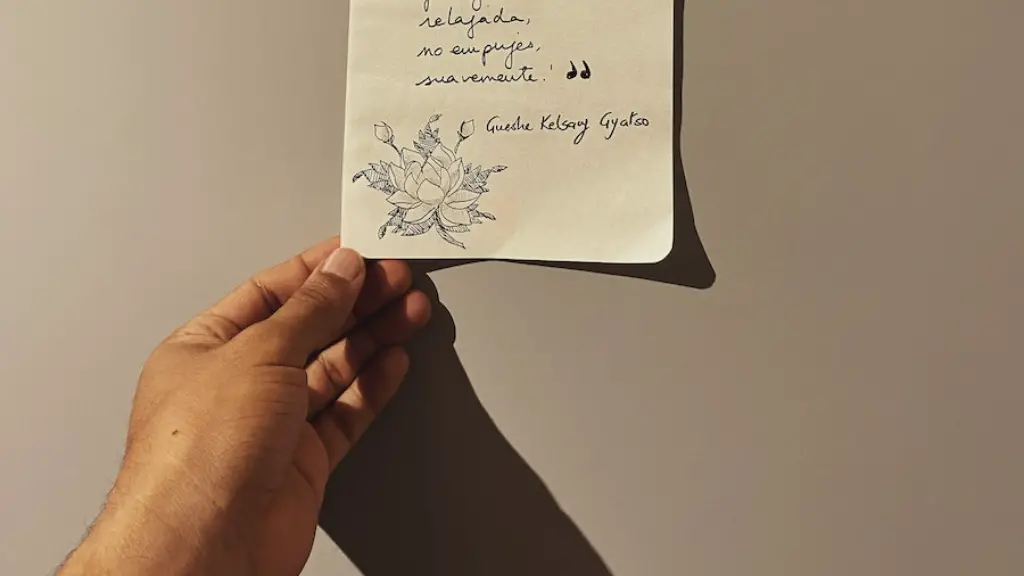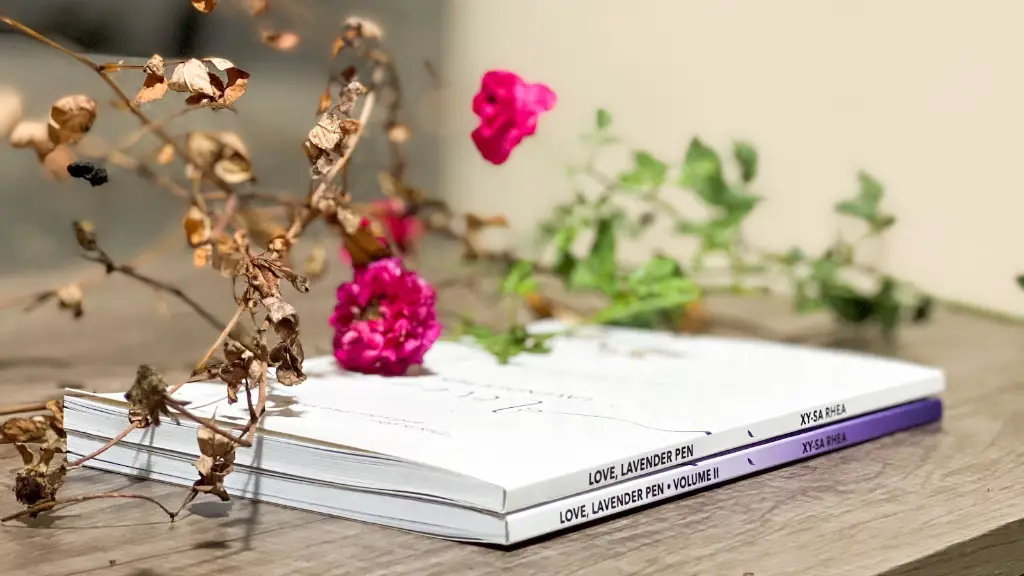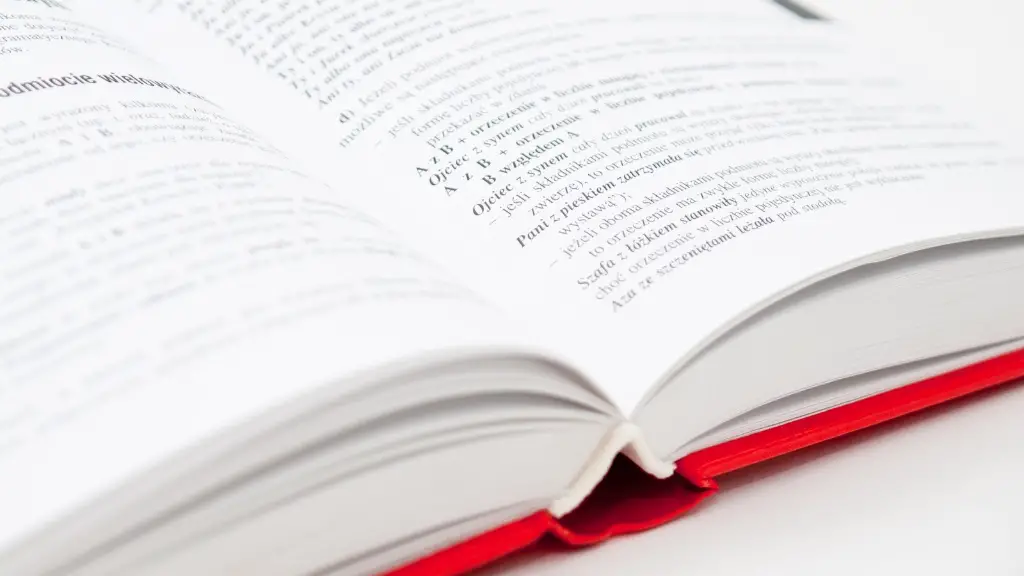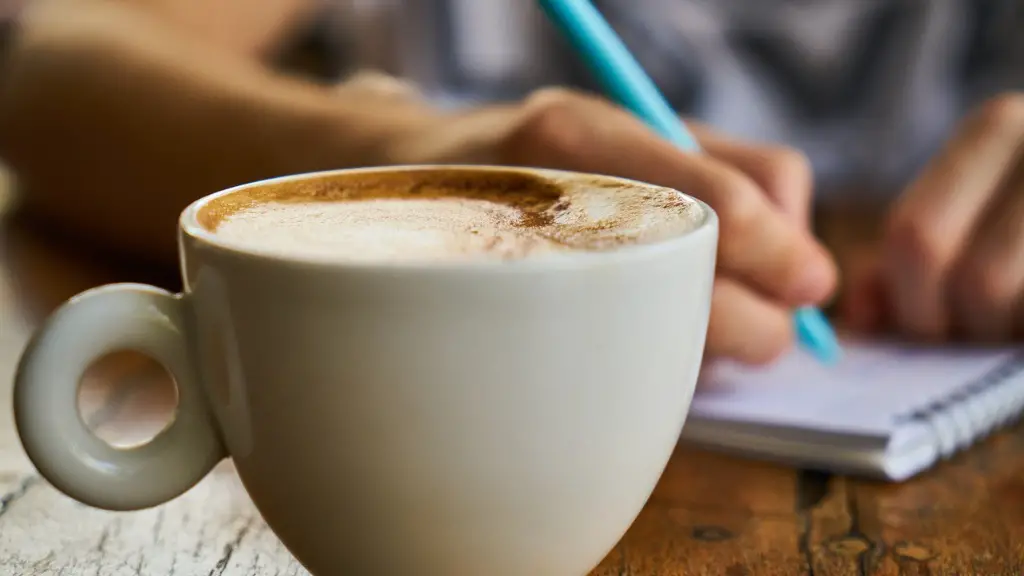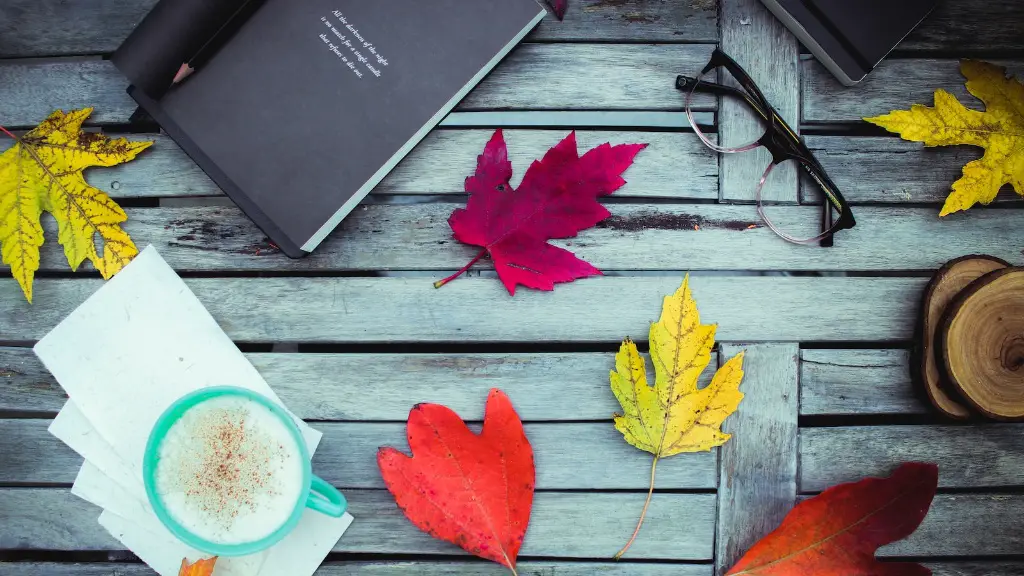Rhythm is an essential element of poetry and has existed in the form of poetry since time immemorial. It is the very foundation of poetic expression, providing the poem with its structure, flow, and expression. Rhythm creates variations in the pitch, volume, and cadence of words, thus affecting the reader’s emotional response. It can also be used as an effective tool to convey the meaning of a poem.
For poets, using rhythm in their writing can create a sense of motion and energy, opening up possibilities for poetic self-expression. It evokes emotions in the reader and can act as a vehicle to transport us to another place. Rhythm can be useful in conveying feelings of excitement, despair, joy, and sorrow. Rhythmic patterns create tension and anticipation, giving the reader a sense of energy and momentum.
Many famous poets have used rhythm to enhance the impact of their writing. William Wordsworth, for instance, often used rhythms to represent the various aspects of nature. In one of his most famous works, “The Solitary Reaper”, he employs iambic tetrameter to convey a sense of melancholy and peace. T.S. Eliot also integrated rhythms in his work to convey a sense of uneasiness, suggesting the complex nature of the modern world. In “The Waste Land”, he employed loose poetic meter, shifting from dactylic to iambic to anapestic and back, creating a disordered and unsettling feel.
Using rhythm in poetry is also effective in creating a bond between the poet and the reader. By employing different rhythms and meters, the poet can establish a connection with the reader and share his or her unique perspective. Poets can use rhythm to spur their readers out of complacency and encourage them to think more deeply about a given subject. Through the use of rhythm, poets can create poetic works that stand out and remain memorable.
Moreover, rhythm can also be used to add emphasis to certain words or phrases. In the sonnet form, a prominent example of this is the use of a volta or turn at the poem’s end, changing the tone and direction of the poem. The use of rhythm in this way can be a powerful and effective technique for the poet.
Poetic Imagery
Aside from its role in conveying emotion and energy, rhythm can also be used to add dimension to a poem. By incorporating a range of poetic imagery and visual imagery, the poet is able to create a vivid mental picture of the scene described in the poem. By doing this, the poet can effectively paint a vivid picture of the subject, thus enhancing their writing and engaging the reader’s imagination.
The use of poetic imagery and metaphors also helps in conveying complex themes and ideas. Poets often use figurative language to help readers visualize the scene described in the poem, thus enriching and adding depth to the work. This technique can bring the poem to life and make it much more enjoyable to read.
In addition, by using poetic imagery, the poet can also evoke certain emotions in the reader. By describing a scene in vivid detail, the poet can create an atmosphere of suspense, awe, and wonder, thus creating a powerful and lasting impression on the reader.
Finally, the poet can also use rhythm to convey the ideas and themes of their poem. By using rhythmic patterns, the poet can reinforce their message and make it easier for the reader to process and understand the poem’s meaning. By doing this, the poet can make their message more meaningful and engaging.
Rhythmic Dialogue
Another reason why writers use rhythm in poetry is to create rhythmic dialogue. By utilizing different cadences, the poet can make the speaker’s words sound natural and parallel to the tone of the poem. Through this, the poet can effectively convey the emotion of the speaker and draw the reader deeper into the poem.
Rhythmic dialogue can also be used to create a sense of urgency in the poem. By using a pattern of fast-paced words and speeding up the rhythm of the poem, the poet can make the reader feel tense and rushed as if they are caught in the rush of the scene described in the poem. This technique can be used to great effect to bring the reader into the poem and draw them further into the narrative.
In addition, rhythmic dialogue can also be used to set a certain mood or atmosphere in the poem. By using a slower, softer rhythm, the poet can create a cozy, intimate feeling, conveying a sense of comfort and familiarity. On the other hand, a faster, more energetic rhythm can be used to create a sense of excitement and energy in the poem.
When used correctly and to great effect, rhythm can become an effective tool in conveying the poet’s story and message. Writers can use rhythm to effectively communicate their ideas and feelings in a short space and to create an impactful and lasting impression on the reader.
Using Sound Devices
Writers also use sound devices to create rhythm in poetry. This can include the use of alliteration, assonance, and onomatopoeia. Alliteration, for instance, is the repetition of sounds at the beginning of words in a line of poetry. This technique can be used to emphasize certain words and draw the reader’s attention to them.
Assonance is the repetition of a vowel sound within a line of poetry. This technique is often used to draw attention to certain words and create a sense of rhythm. Onomatopoeia is the use of words that imitate sounds, such as “buzz” or “hiss.” This technique can be used to create a certain atmosphere in the poem and to draw the reader further into the narrative.
Sound devices such as alliteration, assonance, and onomatopoeia can be used to create rhythm in poetry and to add richness to the poem’s tone and expression. By employing rhythm in this way, the poet can bring the poem to life, creating an impactful and lasting impression on the reader.
Evoking Emotions
Finally, rhythm can be used to evoke certain emotions in the reader. By using different rhythms and meters, the poet can set the tone of the poem, conveying feelings of peace, joy, sorrow, or gloom. By using rhythm in this way, the poet can communicate their message with greater depth and finesse, creating a powerful and lasting impression on the reader.
Rhythm can also be used to create emphasis on certain words or phrases. By prolonging certain syllables or by stressing a certain part of the line, the poet can add emphasis to certain words, thus creating an even greater impact on the reader.
In addition, rhythm can also be used to bring a sense of joy and excitement in the poem. By using upbeat or fast-paced rhythms, the poet can create a feeling of energy and momentum, thus making the poem even more engaging for the reader.
By using rhythm in their poetry, writers can effectively convey their message and evoke certain emotions in the reader. Through the use of rhythm, writers can make their writing more memorable and engaging, creating a powerful and lasting impression.
Visual Imagery
Visual imagery is also used to create rhythm in poetry. By imposing certain images in the poem, the poet can effectively convey their message in a more vivid manner, allowing the reader to more easily visualize the scene being described. The poet can also employ visual imagery to convey complex themes and ideas in a more direct manner.
In addition, visual imagery can be used to evoke certain emotions in the reader. By presenting the reader with a vivid mental picture of the poem’s subject, the poet can effectively bring the reader into the poem and make them feel a greater sense of connection and emotional engagement.
Moreover, the use of visual imagery can also be an effective means of conveying the poet’s message. By providing the reader with a vivid mental image, the poet can make their message more meaningful and engaging, thus creating a powerful and lasting impression.
The use of visual imagery in poetry can lend an even greater depth and richness to the poem’s tone and expression. By using this technique, the poet can effectively convey their message in a more vivid and meaningful manner.
Creating a Sense of Wonder
Finally, rhythm can be used to create a sense of ambiguity and wonder in the poem. By employing a range of complex rhythms, the poet can leave the reader in a state of uncertainty and anticipation, thus creating a powerful impact. By doing this, the poet can encourage readers to think more deeply and reflect on the poem’s meaning and message.
The use of rhythm can also help the poet to convey feelings of awe and wonder in the poem. By utilizing different rhythms, the poet can draw the reader into the poem and create a sense of wonder and amazement, thus enhancing the overall impact of their work.
Moreover, the use of rhythm can also be an effective tool for evoking certain emotions in the reader. By employing different rhythms, the poet can create a sense of excitement, joy, despair, or sorrow, thus creating a powerful and lasting impression on the reader.
By employing rhythm in their works, poets can create a sense of ambiguity and wonder that can be both captivating and engaging for the reader. Through the use of rhythm, poets can draw readers into the poem and encourage them to think more deeply about the poem’s themes and messages.

